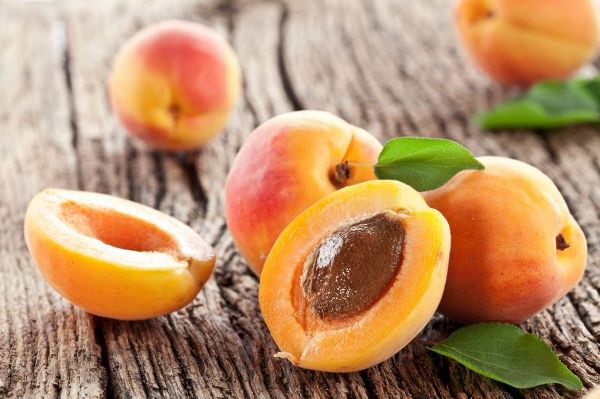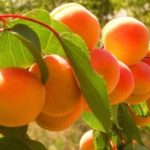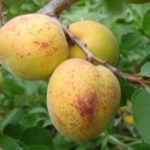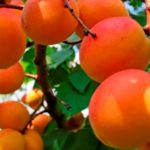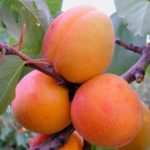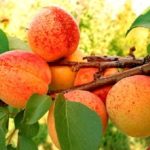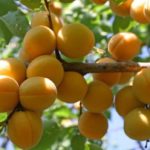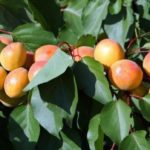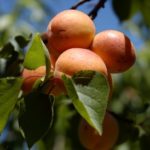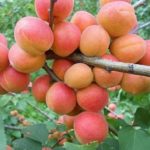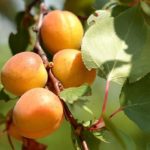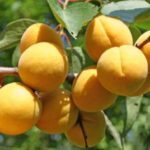The fact that you can find different varieties of apricot seedlings on sale does not stop gardeners from wanting to grow them themselves. The idea of getting a big tree from a small bone, in some, due to the high price of seedlings, in others - for the sake of experiment. Fearing that apricot will not grow, gardeners are looking for a solution to this problem on the Internet. The following material will prevent mistakes on growing seedlings from a stone at home.
Table of contents
Is it possible to grow apricot from the stone at home?
On this occasion, the opinion of practitioners cultivating seedlings of gardeners is divided. Some believe that a good apricot tree adapted to the climate can be obtained from the stone. Others argue that seedlings are best grown by grafting on stone fruit. Bone option will be successful if you know some of the subtleties of their breeding. Otherwise, the apricot will turn out "wild."
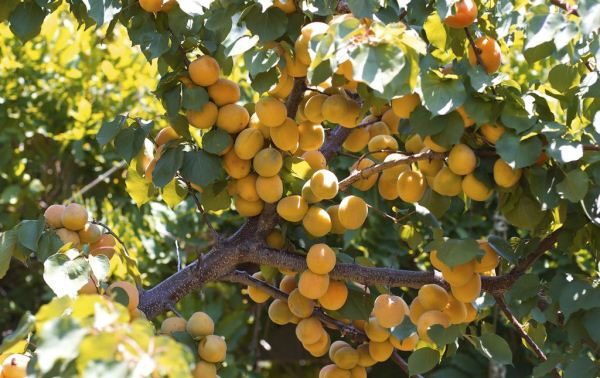
Stone method allows you to grow as many seedlings. By selecting subsequently the strongest plants, it is possible to obtain trees superior to the taste and size of the fruit. As planting material is best to take the bones of apricots that grow in your area. If there is such an opportunity, you can order planting material from gardeners living in the northern regions or Siberia.
Apricots growing under harsh climatic conditions, will take root in any region.When buying apricots for cultivation in the market, choose domestic fruits, they should be ripe and large. It is very difficult to grow imported varieties, but for the sake of experiment you can try. The resulting bones splitting is not necessary, it is enough to wash and dry them.
Where can I grow apricot from the stone
In outskirts of Moscow
For growing seedlings should take the bones of hardy and samoplodnyh varieties. Thermophilic varieties will not fit, they will not withstand the climate of this zone. It is better to give preference to frost-resistant trees. Most adapted for the Moscow region varieties:
- Red-cheeked
- Hardy
- Russian
- Honey
- Snegirek
- Triumph of the north
- Apricot Hardy
- Apricot Honey
- Apricot Russian
- Apricot Snegirek
In Central Russia
Apricots based on the botanical garden of the Russian Academy of Sciences will feel good. Due to the biological characteristics of these varieties are distinguished by endurance and good adaptability. Most adapted to the conditions of this band varieties:
- Iceberg
- Alyosha
- Aquarius
- Countess
- Lel
- Monastic
- Favorite
- Bye
- Apricot Monastic
- Apricot Lel
- Apricot Countess
- Apricot Iceberg
- Apricot Alesha
In Siberia
Gardeners manage to grow apricots from seed, even under the conditions of the harsh Siberian winter. Hardening of the bones and deep planting will help to achieve survival of the seedlings. It is very difficult to grow apricot in Siberia, since in winter the land freezes to 2-2.5 meters in some places. The most winter hardy for this region varieties:
- Sayan
- Gorny Abakan
- Kichiginsky
- Honey
- Chelyabinsk early
- Snezhinsky
- East Siberian
- Apricot Mountain Abakan
- Apricot Kichiginsky
- Apricot Chelyabinsk Early
- Apricot Snezhinsky
Apricot growing conditions for these regions, in contrast to the South-East, require special conditions for planting, care and shelter for the winter.
How to choose a bone for planting?
It has already been mentioned in the description above that it is better to take Far East or Siberian apricot varieties as planting material. They are easier to germinate and they take root better. If you plant southern and Asian varieties, they will freeze or grow very weak. For planting, take ripe, unspoiled fruit.. The flesh should be well separated from the bone.There should be no traces of mold, worms and chips inside the apricot. Remove bones should be washed with water. So that during storage the bones are not moldy, they need to be treated with hydrogen peroxide and dried.
Planting and growing conditions
Bones are planted in the soil in the fall, if it is done in the summer, they can be destroyed by rodents. Several seeds are sown at once, as not each will grow. For the seedling to be hardened, it is necessary to make an artificial or natural stratification.. The procedure will allow to grow seedlings that are strong and durable for the northern regions without any problems.
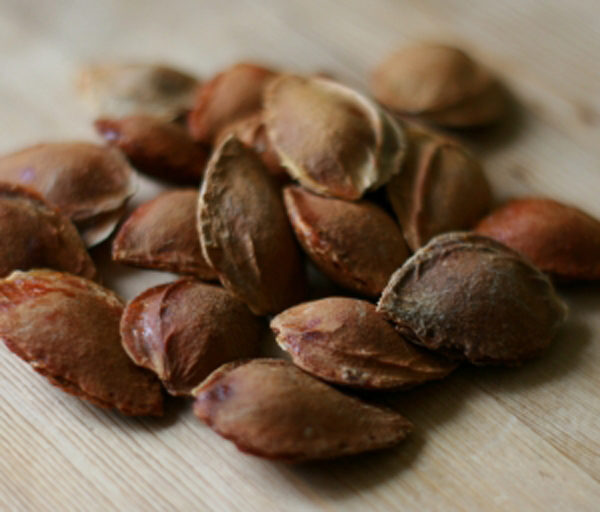
Stratification in the natural way is made in January-February. Bones should be placed inside the container with drainage holes. Cover them with raw sand, bury them in the ground or just leave them on the street.. Artificially hardening procedure produced in the refrigerator. Capacity with sand and stones moistened, placed on the shelf of the refrigerator until the spring.
Planting seed:
- Transplanted seeds aged under frosty conditions. in the ground with the onset of stable weather.In terms of this period is March or April.
- The northern terrain, the deeper need to plant seeds. In Central Russia, the depth of landing 4-7 cm.
- So that the soil does not dry out, it is necessary to water the crop regularly. Shoots usually appear in May. Before the beginning of autumn they need to be watered intensively.
- As soon as the seedlings grow to a height 5–7 cmneed to loosen the soil. This should be done carefully, otherwise you can damage the roots.
- Sick and weak plants are best removed. at the initial stage of cultivation.
- The plant is well rooted, if in the second half of summer apply nitrogen fertilizers.
- To seedlings do not freeze during wintering, they must be covered with cut plastic bottles.
For good pollination is better to plant several varieties at once. Do not allow the soil to dry out in dry weather. With an excess of moisture, it is necessary to loosen the ground more often, this measure will save the roots from rotting.
Transplanting seedlings in open ground
The first year the plant does not bother. When spring comes, you need to pinch the top. Until autumn, the seedling is watered, fertilized and loosened the soil. For the winter they cover with spruce twigs. In the spring shelter removed.Formed branches pinch again. If the growth of seedlings stretches in one direction, it can be tied up.
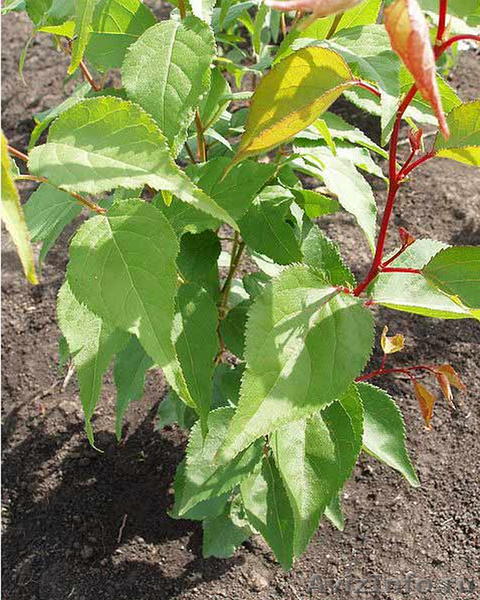
Transplanted into the open ground biennial plant in a new place in the fall or early spring. Landing sequence:
- Dig holes 50-60 cm deep. Place leaves, sawdust or branches at the bottom, they will perform the drainage function.
- Place sapling at the bottom of the pit. To flatten the root, it should not look out of the pit. Cover with earth, tamp and plenty of water.
- After planting, seedlings provide regular watering, at least 20 liters of water per well.
The growth of apricot must be constantly monitored. Patient and caring gardeners will definitely grow a beautiful apricot garden out of pits. The fruits will look different, and their taste will be unique.. Thanks to the efforts, home-grown apricots will become the gardener's pride.
Care for young seedlings in spring and autumn
From the right care depends on the growth of the tree. Therefore, it is important to observe some rules. The entire period of growing a sapling requires more care than a perennial tree.The more effort will be spent on care, the more generous yields can be expected. General rules for the care of seedlings grown from stone:
- Fertilizing apricots in autumn and spring. To soil breathed, it loosened. Remove weeds.
- Since the transplantation of the tree requires treatment with fungicides from diseases and pests.
- That the sapling was properly formed, pruning. In the summer to thin out the young shoots growing inside. Pruning will allow forming a compact and convenient to harvesting tree.
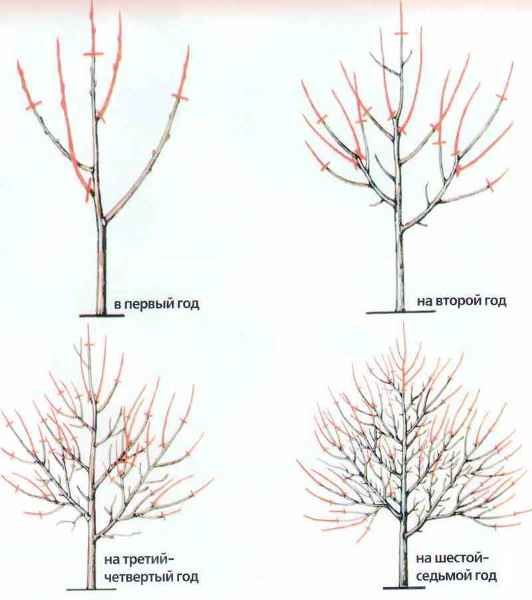
- For the winter, warm the trunk with burlap. So that the wind does not break a young tree, it should be tied up to an even post.
- In the first year of flowering, apricot inflorescences better to remove. This measure will allow to lay a rich harvest for the next season. The tree will give a good growth of the crown.
Gardeners on the basis of their observations mark: the fruits of such trees are less likely to get sick and are almost never wormy.The taste of ripe apricots will be different from the mother variety. Thanks to such experiments, you can get a unique variety of characteristics.The tree will begin to bear fruit 5-7 year. If the bones are planted after harvesting, even more resistant seedlings of the second generation will grow. The presented material can be a great idea of a profitable business of growing apricot seedlings at your cottage for sale.
